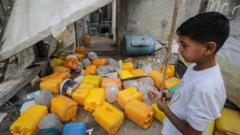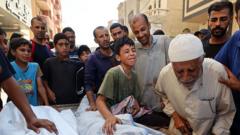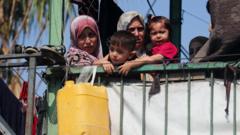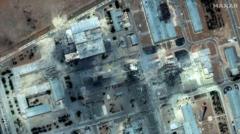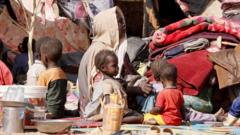The Iranian government's crackdown on undocumented Afghan refugees has led to the mass deportation of over 1.4 million Afghans since January, intensifying the humanitarian crisis in Afghanistan. Many returnees find themselves in dire circumstances, grappling with poverty and severe restrictions as they arrive at the overwhelmed processing centers along the border.
Afghanistan Faces Crisis as Iran Deports Over a Million Afghans

Afghanistan Faces Crisis as Iran Deports Over a Million Afghans
A wave of deportations from Iran has left many Afghans with uncertain futures as they return to a country beset by poverty and gender restrictions.
As Iran continues its aggressive stance against undocumented immigrants, the border town of Islam Qala has become a frontline for the influx of Afghans being forced to return. Daily, around 20,000 Afghans are expelled from Iran, with reports indicating that more than half a million have been sent back just since the outbreak of conflict involving Israel and Iran. This surge in deportations exacerbates an already dire situation in a country struggling with an ongoing humanitarian crisis.
Upon arrival, many deportees are directed to processing centers that struggle to accommodate the growing number of returnees. These centers, particularly in western Afghanistan, have become overcrowded, filled with individuals who harbor fears and uncertainties about their futures. "I worked in Iran for 42 years, so hard that my knees are broken, and for what?" remarked Mohammad Akhundzada, a construction worker displaced from Iran, expressing the collective sense of despair shared among many returnees.
The conditions in Afghanistan present significant challenges. The nation’s economy is deteriorating under a humanitarian crisis, particularly devastating for women and girls facing stringent restrictions under the Taliban regime. The expulsion of Afghans from Iran, coupled with dire job prospects and socioeconomic instability, raises critical questions about the nation's ability to support those returning to a homeland that has increasingly become unlivable for many of its citizens.
This wave of returns is not merely a numeric challenge but reflects the human struggle of Afghans caught in the cycles of transnational displacement and national crisis. As communities prepare to grapple with this influx, the emphasis must shift towards comprehensive support mechanisms to address the immediate and long-term needs of returnees striving for stability in an uncertain environment.
Upon arrival, many deportees are directed to processing centers that struggle to accommodate the growing number of returnees. These centers, particularly in western Afghanistan, have become overcrowded, filled with individuals who harbor fears and uncertainties about their futures. "I worked in Iran for 42 years, so hard that my knees are broken, and for what?" remarked Mohammad Akhundzada, a construction worker displaced from Iran, expressing the collective sense of despair shared among many returnees.
The conditions in Afghanistan present significant challenges. The nation’s economy is deteriorating under a humanitarian crisis, particularly devastating for women and girls facing stringent restrictions under the Taliban regime. The expulsion of Afghans from Iran, coupled with dire job prospects and socioeconomic instability, raises critical questions about the nation's ability to support those returning to a homeland that has increasingly become unlivable for many of its citizens.
This wave of returns is not merely a numeric challenge but reflects the human struggle of Afghans caught in the cycles of transnational displacement and national crisis. As communities prepare to grapple with this influx, the emphasis must shift towards comprehensive support mechanisms to address the immediate and long-term needs of returnees striving for stability in an uncertain environment.





